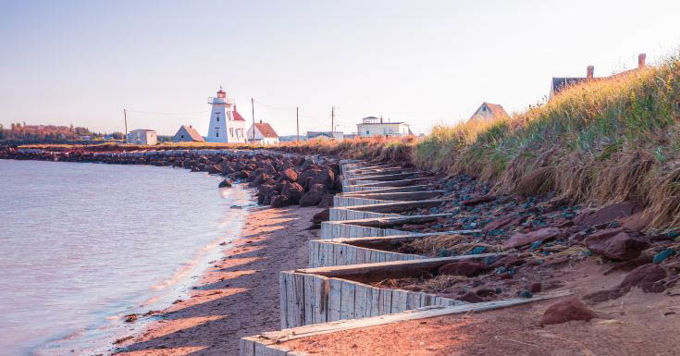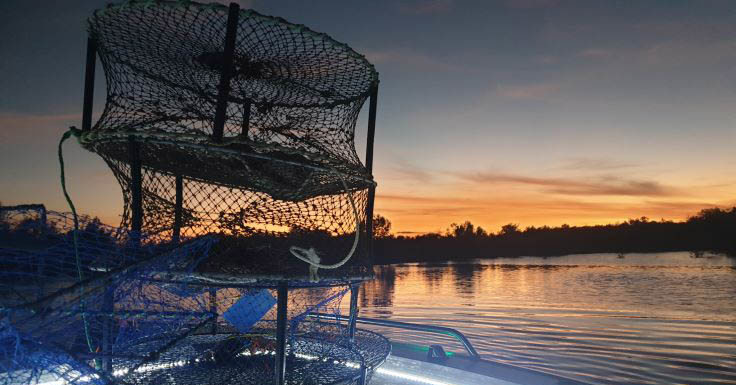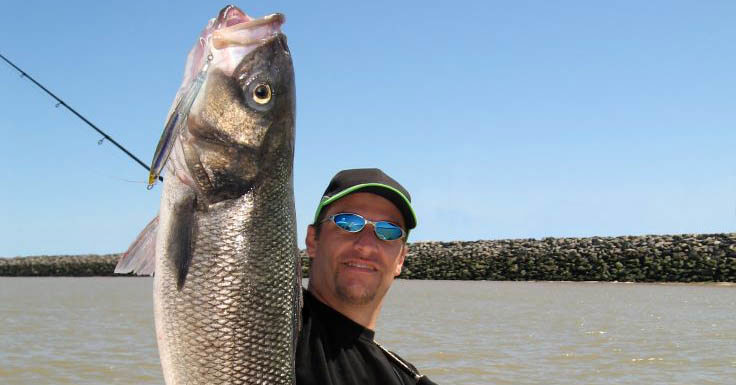
The Virginia Marine Resources Commission's Implementation of the Living Shoreline Requirement in SB776
The New Law Presents Challenges for the VMRC
Virginia could be changing the way that it manages its shorelines as a result of the enactment of SB776, which took effect on July 1, 2020. I use the word “could” because a change that the legislature writes into a law amounts to nothing until translated into action by the agency charged with executing that law. That agency in the case of SB776 is the Virginia Marine Resources Commission (“VMRC”). The degree to which SB776 brings about meaningful change will hinge on the VMRC’s ability to change course from its decades-long practice of routinely granting permits for hardened shorelines. Another (unenviable) challenge for the VMRC is the degree to which it is willing to deny permits for hardened shorelines in the face of applicants claiming that shoreline erosion is destroying their property and that the living shoreline is an unaffordable solution.
We have written extensively about this new law because it could require large expenditures by commercial and residential waterfront property owners, and it could force commercial waterfront property owners to modify the manner in which they conduct operations at their facilities. This article explains what the VMRC is doing to implement the new law. During the month when the new law first took effect we published an introductory article to alert our readership to the new law. We have also written articles offering guidance on how to interpret the new law’s “Best Available Science” standard and offering advice on how the new law should be interpreted in the situation where a living shoreline would be vastly more expensive than a hardened shoreline.”
Hardened Shorelines are Popular
SB776 directs the VMRC and Local Wetlands Boards to force waterfront property owners to install living shorelines (instead of hardened shorelines) “unless the best available science shows that [a living shoreline is] not suitable.” The Virginia General Assembly enacted laws in 1962 and 1972 that placed control of shorelines in the VMRC for all of the waterspace from the territorial sea in Virginia to the fall line of Virginia’s tidal rivers and streams. During the eons of time when nature alone managed these shorelines there were no bulkheads, no rip-rap, and no revetments anywhere on the 5,000 miles of Virginia shoreline. Over time, many of these living shorelines were swallowed up and replaced with hardened shorelines. Hardening the shoreline can be appealing because it seems like a reliable and durable solution. It is oftentimes cheaper than a living shoreline. There is for some an emotional appeal to the extent that installation of a hardened shoreline aligns with the gut feeling that man is entitled to exercise dominion over the earth.

(Annie 888 / Shutterstock.com)
SB776 Tries to Restrict Hardened Shorelines Because They Damage Marine Resources
Over time the hidden costs associated with hardened shorelines began to crop up:
- Dirtier water in our creeks, rivers, lakes, ponds, bays and territorial sea
- Worsened flooding of waterfront properties
- Diminished commercial stocks of finfish, crabs, and oysters

(Hong Vo / Shutterstock.com)
The VMRC shone a light on these environmental damages, and the associated hidden costs, when it issued its Wetland Guidelines in 1993 but this did little to slow the pace of waterfront property owners hardening their shorelines. Then, in 2011, the Virginia General Assembly began to turn the tide on hardened shorelines by enacting SB964, sponsored by then-Senator and now-Governor Ralph Northam. SB964 “encourages the use of living shorelines as the preferred alternative for stabilizing tidal shorelines in the Commonwealth”. Still, notwithstanding enactment of SB964, when shoreline stabilization projects came before the VMRC in the nine years since enactment of SB964, the Commission routinely approved hardened shoreline projects. Rarely, if ever, did the VMRC withhold approval and tell the applicant to come back another day after he or she replaced the proposal to build a hardened shoreline with a proposal to build a living shoreline at their waterfront property.

(Fabien Monteil / Shutterstock.com)
How SB776 Tries to Restrict Hardened Shorelines
In 2020 the Virginia General Assembly acted yet again to discourage hardened shorelines when it enacted SB776.
There are three key points of the new law:
- Directs the VMRC to stop granting permits allowing waterfront property owners to install a hardened shoreline “unless the best available science shows that [a living shoreline is] not suitable.” If the best available science shows that a living shoreline is not entirely suitable, the VMRC “shall require the applicant to incorporate, to the maximum extent practicable, elements of living shoreline approaches” (codified at Va. Code §28.2-104.1(D)).
- Directs the VMRC to develop “minimum standards” to protect and conserve shorelines and wetlands (codified at Va. Code §28.2-1301 (B) & (C)).
- Mindful that the wetlands permit process differs from the VMRC habitat permit process (different standards), the Virginia General Assembly put new language in the wetlands permitting law that makes it more difficult for the Wetlands Board to issue a permit for a hardened shoreline (Va. Code §28.2-1302 (see §4(B) and §9 of the Wetlands Zoning Ordinance)).
How the VMRC is Carrying Out its Responsibilities Under SB776
Most applicants before installing a shoreline stabilization project must obtain a permit from the Local Wetlands Board, in addition to a permit from the VMRC (in addition to permits from other regulatory agencies). The VMRC May 12, 2020 memorandum to Local Wetlands Boards alerts those Boards that they must update their wetlands zoning ordinance to conform to the requirements of SB776. This means that Local Wetlands Boards, as is the case with the VMRC, may not grant a permit allowing installation of a hardened shoreline “unless the best available science shows that [a living shoreline is] not suitable.”
The VMRC’s decades-long past practice of routinely granting permits for hardened shorelines creates momentum that could be difficult to overcome as the agency grapples with the new law that disfavors hardened shorelines. A living shoreline requires a gradual slope between the upland and the water. Topography of this type is absent at the majority of waterfront properties. This gentle transitional slope between upland and water is however capable of being created so long as the property owner agrees to grade back the upland (perhaps a substantial amount of upland will be lost), the VMRC agrees to convey some of the bottomland beneath the water, or a combination of the two. There is a not insubstantial cost to design the living shoreline, in addition to the cost of the earth moving operation needed to create such a gradual slope. Added further cost arises if a sill, groin, breakwater, or a combination of the three, is needed to protect the living shoreline from destructive forces of wave energy. The living shoreline has servicing and maintenance needs that create another cost factor, driven in one respect by sea level rise and in another respect by the need to repair damage wrought during the occasional severe storm event.
There is no question that the “best available science” is up to the task of designing and constructing a living shoreline for most, if not all, waterfront properties in Virginia. The difficulty for the VMRC is that it is going to be confronted by waterfront property owners demanding that the VMRC issue a permit for a hardened shoreline because, in the applicant’s view, the living shoreline is unaffordable. Future articles in this blog will offer suggestions for how the VMRC might appropriately implement the “best available science” standard in SB776 and whether it is appropriate for the VMRC to consider an applicant’s perceived affordability concerns.
SB776 also requires the VMRC to develop “minimum standards” to protect and conserve shorelines and wetlands. The General Assembly in prior law (codified at Va. Code §28.2-1301 (B) & (C)) stated that VMRC should develop the minimum standards to help the VMRC perform its permit-issuing function with respect to wetlands and that these minimum standards would also be useful to counties, cities and towns in regulating wetlands. (Note: Va. Code §28.2-100 authorizes as many as 46 localities to establish a Local Wetlands Board; there are 35 Local Wetlands Boards at present time.) When it enacted SB776 the General Assembly instructed the VMRC to ensure that the agency considered the effects of sea level rise when it writes the minimum standards (codified at Va. Code §28.2-1301 (B)).
To grapple with these various issues, the VMRC held three well-attended workshops in August and September 2020 to assist and inform the agency as it decides how to manage and implement this potentially major change in the management of Virginia’s shorelines. There were 94 attendees at the first workshop held on August 6, 2020; 74 attendees at the second workshop held on September 9, 2020; and, 52 attendees at the third workshop held on September 30, 2020. The VMRC wanted and received through these workshops a broad range of input from the regulatory and the regulated community.
Next Steps
The VMRC intends to use the public input received at the workshops, along with the agency’s own considerable expertise, as it develops a new guidance document that will replace the Wetland Guidelines promulgated in 1993 and will address the various requirements of SB776 (the “best available science” issue, how to weigh cost as a factor on the choice between a living shoreline and hardened shoreline, and promulgation of the “minimum standards” component of the new law). The VMRC plans a four-step process to bring the new guidelines into law:
- Draft the new guidelines
- Release the new guidelines in draft for a period of public comment
- Revise the new guidelines to the extent necessary following close of public comment period
- Present the new guidelines to the VMRC at a public hearing for adoption
The VMRC’s intention at the time when SB776 was enacted was to release the new guidelines in draft form for public comment by the end of 2020. It appears however, based on VMRC’s latest estimate, that the new guidelines will not be ready to release to the public in draft form until some point in 2021.
Stay tuned and watch for my upcoming articles in this blog offering suggestions for how the VMRC might appropriately implement the “best available science” standard in SB776 and whether it is appropriate for the VMRC to consider an applicant’s perceived affordability concerns.
Conclusion
We have written extensively about this new law because it could require large expenditures by commercial and residential waterfront property owners, and it could force commercial waterfront property owners to modify the manner in which they conduct operations at their facilities. This article explains what the VMRC is doing to implement the new law. During the month when the new law first took effect we published an introductory article to alert our readership to the new law. We have also written articles offering guidance on how to interpret the new law’s “Best Available Science” standard and offering advice on how the new law should be interpreted in the situation where a living shoreline would be vastly more expensive than a hardened shoreline. If you have any questions about how wetland laws or living shorelines impact your waterfront property rights, our experienced waterfront law team is happy to help. Feel free to contact us here.
